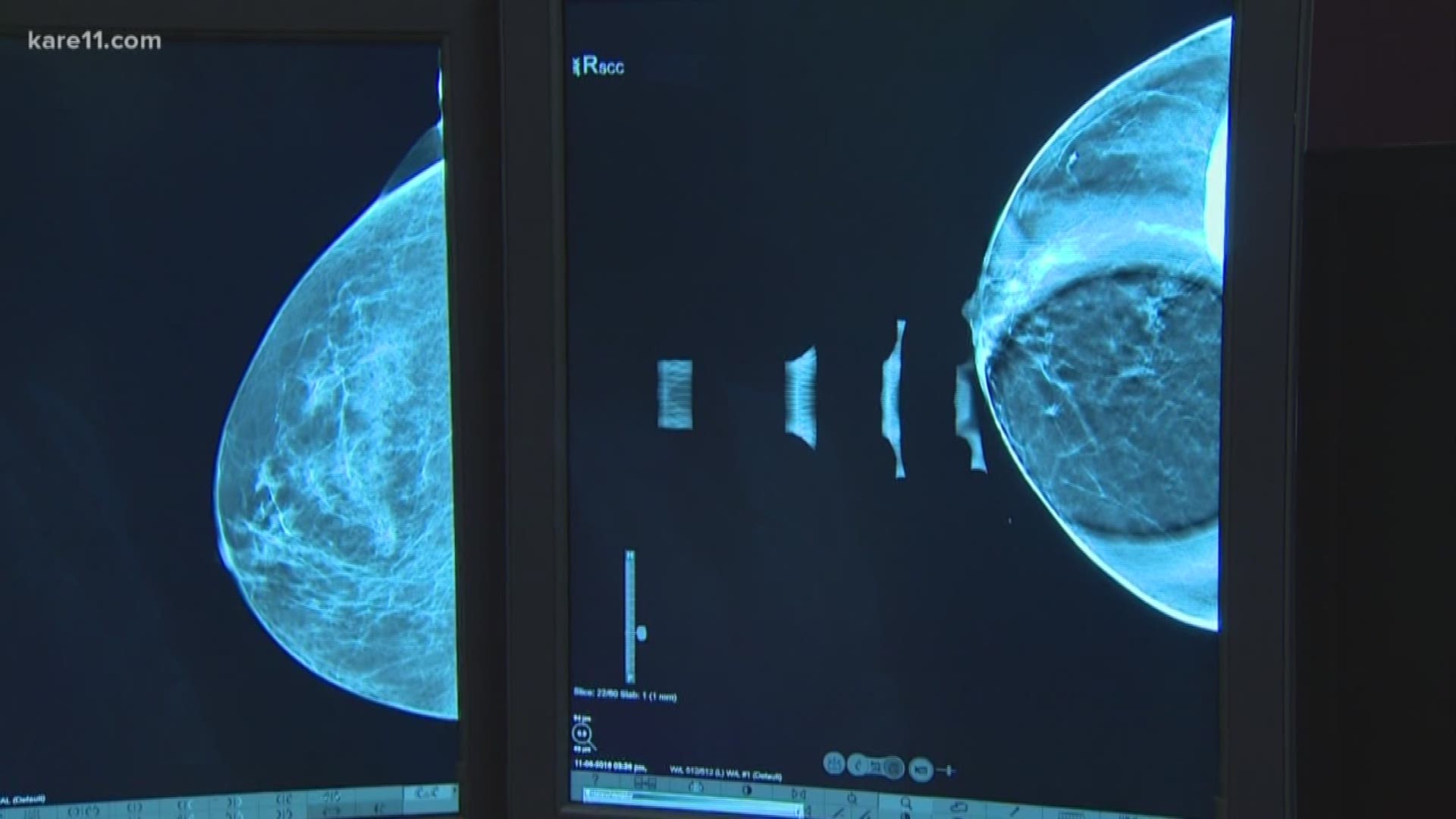MINNEAPOLIS — Ladies, if you get a yearly mammogram, you've likely been offered something new in the last few years: a 3D mammogram.
You've also likely been told it will cost you more out of pocket.
So, is the new scan worth the extra cash? We went to Dr. Trudy Parker from the Abbott Northwestern Piper Breast Center to ask.
We’ll get right to the answer. Dr. Parker says, “yes.” Let’s dig deeper, now, into why.
Dr. Parker shows us a case where a 3D mammogram caught a cancer that wouldn't have been seen on a traditional 2D scan. The cancer is not visible on the traditional scan but can be clearly seen on the 3D version.
But is it necessary for all patients? Parker explains the difference between the two by starting with what's the same.
"The equipment is the same, the compression is the same, the time of the exam and positioning of the patient is the same,” says Dr. Parker. “The radiation dose, I'm happy to say, is the same now. It used to be double the dose but now it's basically the same."
What's different is the scan itself. A traditional mammogram, or 2D scan, takes two images of the breast so you get four images total. A 3D scan takes an image every millimeter, which could lead to a couple hundred images.
"Some people will compare it to looking at a book without opening it up with 2D, or traditional mammogram, or having that book, being able to open it up, and going page by page, for a 3D mammogram,” says Dr. Parker.
That means a radiologist might be able to see a smaller cancer, like the case we talked about earlier, that might not otherwise have been detected.
“Because we're able to pick up a small cancer that maybe we may not have seen, we're picking up at potentially an earlier stage, which can lead to increased survival rates, and also the patient may have more surgical options,” she says.
OK, but if it’s a better option, then why wouldn’t it be the standard right now? And why would you have to pay more for it instead of it being fully covered by insurance?
"I wish it was,” says Dr. Parker. But adds, “I think we've made a lot of headway."
"Almost all the major insurance companies do pay for 3D, but insurance has become much more complex,” she says.
So, you might end up paying out of pocket if you want the 3D scan, but that could save you money down the road. 3D mammograms have far fewer false positives, especially for women with dense breast tissue. That means you're less likely to get called back for extra testing, which will cost you not only more money, but emotional stress.
Many insurance companies do, as we mentioned, cover the 3D scan, but how much and what you end up paying will depend on your insurance company. For example, you might have a co-pay or a high deductible plan. It’s best to call ahead to find out what the procedure will cost so you can make the determination ahead of time.
And while studies have shown that 3D scans are better at finding cancers at an earlier stage, and have fewer false positives, the research on whether they are better at finding potentially fatal cancers is not there yet.

